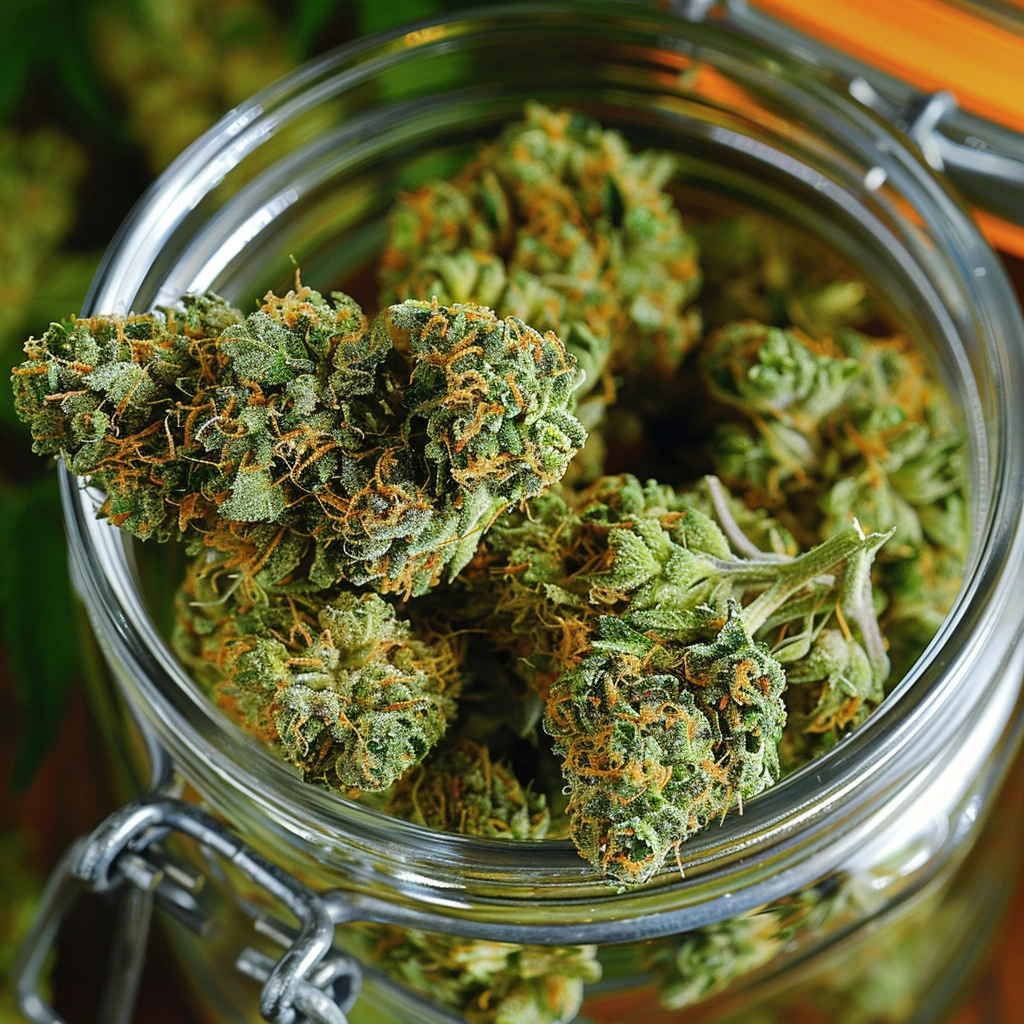Embarking on a journey through the ever-evolving landscape of medical cannabis reveals its remarkable capacity as a beacon of relief in the realm of pain management. The renaissance of cannabis in medicinal use has ushered in an era of healing that transcends traditional boundaries, offering new hope to those ensnared in the grips of chronic pain. This exploration delves into the medical uses of cannabis for pain management, illuminating its potential, mechanisms, and the profound impact it has on individuals’ lives.


Table of Contents
ToggleUnveiling the Potential: Cannabis as a Pillar of Pain Relief
The resurgence of interest in medical cannabis has been largely fueled by its potential to mitigate various forms of pain, from neuropathic agony to the discomfort associated with chronic diseases. Amidst the opioid crisis, cannabis emerges not just as an alternative but as a potential solution, offering pain relief without the harrowing risk of addiction that often shadows conventional painkillers.
A Natural Analgesic: Understanding How Cannabis Relieves Pain
At the core of cannabis’s pain-relieving prowess lies its interaction with the human body’s endocannabinoid system (ECS), a complex network of receptors spread throughout the body, designed to maintain balance and health. Cannabinoids like THC (tetrahydrocannabinol) and CBD (cannabidiol) engage with this system, modulating pain perception and inflammation. THC, known for its psychoactive effects, also possesses analgesic properties, offering relief by binding to cannabinoid receptors in the brain. CBD, while non-psychoactive, works synergistically to enhance THC’s pain-relieving effects and reduce inflammation, crafting a multi-faceted approach to pain management.
Bridging the Gap: Cannabis in Chronic Pain Management
The versatility of cannabis in treating pain lies in its ability to address both the physical and psychological dimensions of suffering. Chronic pain, a persistent shadow that affects millions, often leads to secondary symptoms such as anxiety and depression, further exacerbating discomfort. Cannabis’s dual action, alleviating physical pain while soothing the mind, positions it as a holistic treatment, bridging the gap between mental and physical health.


Charting the Course: Navigating the Use of Cannabis for Pain
As the tide of medical cannabis continues to rise, navigating its use, particularly for pain management, becomes paramount. Understanding dosing, strains, and delivery methods is essential for harnessing cannabis’s full therapeutic potential while minimizing risks.
Personalized Medicine: Tailoring Cannabis to Individual Needs
The path to effective pain management with cannabis is highly individualized. Factors such as the type and intensity of pain, patient tolerance, and previous experiences with cannabis play crucial roles in determining the optimal strain, dosage, and method of administration. Strains rich in CBD are often preferred for their analgesic and anti-inflammatory effects without the intoxicating high, making them suitable for day-to-day relief. Meanwhile, THC-dominant strains may be beneficial for acute pain flare-ups or when enhanced relaxation is needed.
Beyond Smoke: Exploring Diverse Delivery Methods
The evolution of medical cannabis has brought forth a variety of delivery methods, from traditional smoking to oils, edibles, topicals, and vaporization. Each method offers distinct advantages and onset times, from the rapid relief provided by inhalation to the prolonged effects of edibles, allowing patients and healthcare providers to tailor treatments to specific pain management needs.


Looking Forward: The Future of Cannabis in Pain Management
As we gaze into the future of medical cannabis for pain management, it is clear that ongoing research and clinical trials will pave the way for deeper understanding and broader acceptance. The potential for cannabis to revolutionize pain management practices is immense, offering a beacon of hope for those seeking alternatives to traditional painkillers.
Advocacy, Education, and Research: Pillars of Progress
Advancing the role of cannabis in pain management will require concerted efforts in advocacy, education, and research. By dismantling stigma, educating healthcare professionals and patients, and investing in comprehensive studies, we can unlock the full potential of cannabis as a cornerstone of pain relief.
In the narrative of pain management, cannabis stands as a testament to nature’s capacity for healing, offering a blend of relief, hope, and promise for a future where pain is no longer an insurmountable adversary but a manageable aspect of life. As we continue to explore and understand cannabis’s myriad benefits, we open the doors to innovative, compassionate care that aligns with the holistic needs of those it serves.
FAQ: Medical Cannabis in Pain Management
How does medical cannabis help manage pain?
Medical cannabis interacts with the body’s endocannabinoid system (ECS), which plays a key role in regulating pain, mood, and inflammation. Cannabinoids like THC and CBD can modulate pain perception and reduce inflammation, offering relief from various types of pain including chronic pain, neuropathic pain, and pain associated with conditions like arthritis and multiple sclerosis.
Is medical cannabis more effective than traditional painkillers?
The effectiveness of medical cannabis compared to traditional painkillers varies depending on the type of pain, the individual’s biology, and the specific cannabinoids used. Some patients find cannabis to be more effective in managing their pain with fewer side effects, particularly for chronic pain conditions where opioids may be less effective and carry a higher risk of dependency.
Can anyone use medical cannabis for pain management?
Eligibility for medical cannabis use depends on local laws, medical conditions, and physician recommendations. Typically, patients with chronic pain conditions that have not responded well to conventional treatments may be considered for medical cannabis, but they must undergo a thorough evaluation by a healthcare professional familiar with cannabis medicine.
What are the risks of using medical cannabis for pain?
While medical cannabis is generally considered safe, it can have side effects such as dizziness, dry mouth, and in the case of THC-rich products, psychoactive effects. There is also a risk of interaction with other medications. It’s important to use cannabis under the guidance of a healthcare professional who can monitor for side effects and adjust treatment as necessary.
How do I start using medical cannabis for pain management?
Start by consulting with a healthcare professional who has experience with medical cannabis. They can evaluate your condition, discuss potential benefits and risks, and if appropriate, recommend a specific product and dosage. In regions where medical cannabis is legal, you may need to obtain a medical cannabis card or prescription.
Are there different strains of cannabis for different types of pain?
Yes, there are many strains of cannabis, each with varying levels of THC, CBD, and other cannabinoids, as well as terpenes that can affect their therapeutic effects. Some strains may be more effective for inflammatory pain, while others might be better suited for neuropathic pain. A healthcare professional knowledgeable in cannabis can help select the appropriate strain for your condition.
Can CBD alone manage pain, or is THC necessary?
CBD alone can manage certain types of pain, especially inflammation-related pain, without the psychoactive effects of THC. However, some studies and patient reports suggest that a combination of CBD and THC may offer enhanced pain relief for some conditions due to the entourage effect, where the presence of multiple cannabinoids and terpenes enhance the overall therapeutic effects.
How do I find the right dosage of medical cannabis for pain?
Finding the right dosage involves starting with a low dose and gradually increasing until you achieve effective pain relief with minimal side effects. This process, known as titration, should be done under the supervision of a healthcare professional who can provide guidance based on your specific condition and response to treatment.
These FAQs aim to provide a comprehensive overview of the use of medical cannabis in pain management, addressing common questions and concerns. As research evolves and our understanding of cannabis’s therapeutic potential grows, so too will the insights and recommendations for its use in alleviating pain.
Kannabu's Online Cannabis Educational Resources
Read Educational Online Guides and Articles to Learn About Cannabis
- Navigating the Green Path: CBD vs. THC in Medical Treatment
- The Aromatic Architects of Healing: The Role of Terpenes in Medical Cannabis
- Navigating the Green Frontier: Clinical Trials on Cannabis and Its Effects
- Charting the Green Path: Cannabis Dosing Guidelines for Medical Use
- The Endocannabinoid System: Nature’s Balancing Act in Human Health
- A Green Horizon: Cannabis as an Alternative to Opioids
- Navigating the Mind’s Garden: Cannabis and Mental Health Treatment
- Unlocking the Green Code: Exploring the Genetic Diversity and Pharmacological Promise of Cannabis
- Weaving Green into Gold: The Integration of Medical Cannabis into Traditional Medicine
- The Therapeutic Promise of Medical Cannabis: Exploring the Spectrum of Cannabinoids
- From Young to Old: The Compassionate Embrace of Medical Cannabis in Pediatric and Geriatric Care
- Green vs. Traditional: Navigating the Crossroads of Medical Cannabis and Conventional Therapies
- Beyond the Pain: The Comparative Effectiveness of Cannabis in Chronic Pain Management
- Unlocking Cannabis’s Secrets: The Journey Through Cannabinoid Pharmacokinetics and Pharmacodynamics
- Green Paws: Navigating the Frontier of Medical Cannabis in Veterinary Care
- Unlocking Relief: The Transformative Role of Medical Cannabis in Pain Management
- Harnessing Harmony: Medical Cannabis and the Battle Against Autoimmune Disorders
- Embracing the Night: How Medical Cannabis Transforms Sleep Management
- Turning the Tide: Cannabis as a Catalyst for Relief and Recovery in Nausea and Appetite Stimulation
- Illuminating the Neural Pathways: The Transformative Role of Medical Cannabis in Neurological Conditions
- Harnessing Harmony: Medical Cannabis and the Battle Against Autoimmune Disorders
- A Clearer View: Medical Cannabis in the Treatment of Glaucoma
- Breaking Boundaries: Cannabis and the New Frontier in Epilepsy and Seizure Control
- Revolutionizing Relief: Medical Cannabis in Cancer Symptom Management
- Navigating the Storm: Cannabis as a Beacon of Hope in Multiple Sclerosis Treatment
- Cannabis: A Natural Respite for Arthritis and Joint Pain
- Healing from Within: The Role of Medical Cannabis in Treating Gastrointestinal Disorders
- Healing Invisible Wounds: Cannabis in PTSD and Trauma Treatment
- Balancing the Mind: The Potential of Medical Cannabis in Bipolar Disorder and Mood Stabilization
- Illuminating the Mind: Cannabis in the Treatment of Alzheimer’s and Neurodegenerative Diseases

